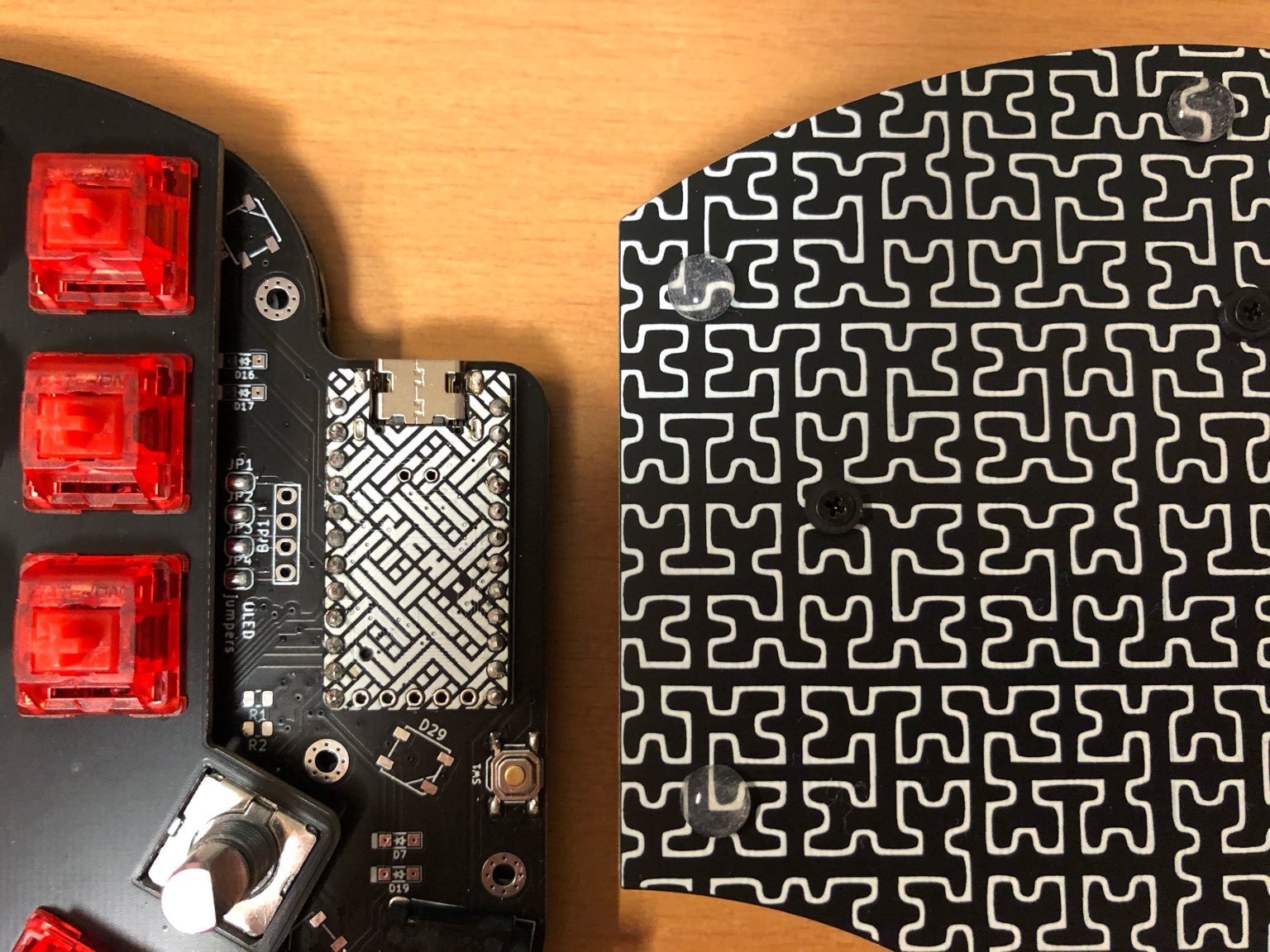This is a 34-36-key-board.
- 36 keys, two of them can be replaced by rotary encoders making it support 34-36 keys and 2-4 encoders.
- bright RGB Underglow with WS2812b LEDs
- one SSD1306 OLED per side
- support for the pimoroni trackball
- powered by QMK-firmware (Firmware has been merged and can be found on the QMK master)
- aggressive pinky stagger similar to the Kyria but with a slightly alternative thumb cluster to raise comfort for large hands
- support for MX and Kailh choc v1 switches
- files for fr4 plate and acrylic bottom plate as well as OLED window
- PCBs are fully working (OLED, LEDs, all switches, encoders, Trackball)
- acrylic plates have arrived and fit perfectly
- 3D-printable case has been added thanks to the awesome work of Sadek Baroudi
- basic ZMK Firmware (not all features implemented yet) exists on my fork of the zmk firmware
- hardware availability is always a big problem and ordering everything yourself is a big hustle. Therefore I'm happy to tell you that Ben from keycapsss (not me) is so kind to offer everything to make a full build. And for those of you who are American, littlekeyboards (also not me) also offers kits
- if you live in a remote area resulting in high shipping costs or problems with importing, gerbers for ordering the PCBs and SVGs for getting plates cut are available in this repo, too
- for the upper encoder you can't use the really big guitar knobs as they're too wide and will interfere with the OLEDs, the smaller ones are recommended
- the thumb cluster is lower than on boards like the Corne keyboard
- liking or disliking a layout is not a matter of how "good" the layout is but mostly preference, hence I recommend looking at a split keyboard comparison site and print out some layouts to confirm you like it. (DracuLad can be found there, too)
- before purchasing encoders, make sure they fit! The holes in the plate are 12mm x 12mm and won't fit bigger encoders. They're in particular not the size of the switch footprints.
















